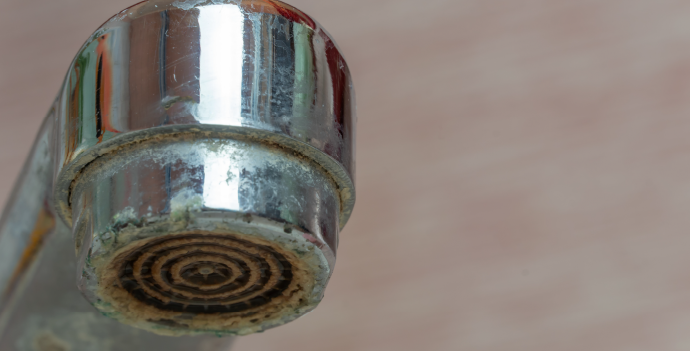Have you ever noticed strange blue-green stains in your sinks, toilets, or tubs? While it might seem like a mere cosmetic issue, these stains could be a sign of a more significant problem lurking in your water supply. Low pH water, also known as acidic water, can not only cause unsightly stains but also pose risks to your plumbing and drinking water quality. Let’s delve into the effects of low pH water and how you can address this issue to safeguard your home and health.
Understanding Low pH Water
pH is a measure of how acidic or alkaline a substance is, with values ranging from 0 to 14. Pure water has a neutral pH of 7, while anything below 7 is considered acidic. Low pH water, typically below 6.5, is acidic and can occur naturally or result from environmental factors such as acid rain or industrial pollution. When water has a low pH, it becomes corrosive, meaning it can dissolve metals and other materials it comes into contact with.
Blue-Green Staining: A Telltale Sign of Acidic Water
One of the most visible indicators of low pH water is the presence of blue-green stains on plumbing fixtures and surfaces. These stains are often caused by the corrosion of copper pipes and fittings, which releases copper ions into the water. When these ions come into contact with certain substances, such as soap or oxygen, they react to form blue-green copper compounds that adhere to surfaces.
The Effects on Plumbing
The corrosion caused by low pH water can have detrimental effects on your plumbing system, including:
- Pipe Degradation: Acidic water can eat away at the protective coatings inside copper pipes, leading to pinhole leaks, pitting, and eventual pipe failure.
- Fixture Damage: Faucets, showerheads, and other plumbing fixtures can develop leaks and fail prematurely due to corrosion from acidic water.
- Water Contamination: As pipes corrode, they can release harmful metals like copper and lead into the water supply, compromising its quality and safety.
Impact on Drinking Water Quality
In addition to damaging plumbing infrastructure, low pH water can also affect the quality of your drinking water:
- Metal Contamination: Corrosion of copper pipes can result in elevated levels of copper in drinking water, which can cause health issues, especially for infants and young children.
- Taste and Odor: Acidic water may have a metallic taste or unpleasant odor, making it less appealing to drink and use for cooking.
- Health Risks: Prolonged exposure to low pH water and elevated copper levels can contribute to gastrointestinal problems and other health issues over time.
Addressing the Issue of Low pH Water
If you suspect that your water has a low pH, it’s essential to take action to protect your plumbing and drinking water quality:
- Water Testing: Have your water tested by a certified laboratory to determine its pH level and identify any other potential contaminants.
- Water Treatment: Depending on the severity of the problem, water treatment options such as neutralizing filters, chemical feed systems, or acid injection systems may be recommended to raise the pH of your water and reduce corrosion.
- Plumbing Inspection: Regularly inspect your plumbing system for signs of corrosion or leaks and replace any damaged pipes or fixtures promptly.
- Hygiene Practices: Clean and maintain plumbing fixtures regularly to prevent the buildup of stains and contaminants.
In conclusion, blue-green staining caused by low pH water is more than just a cosmetic nuisance—it’s a warning sign of potential plumbing damage and water quality issues. By understanding the effects of low pH water and taking proactive measures to address the problem, you can protect your home and ensure access to safe, clean drinking water for you and your family. Remember, when it comes to water quality, prevention is key.
If you’re interested in clean water in your home – schedule a free, no-obligation in-home water analysis with an Artisanal Water local expert.
Call (704) 315-6344 or fill out our contact form.
